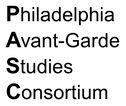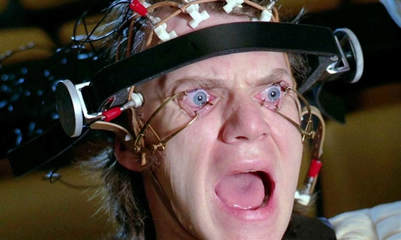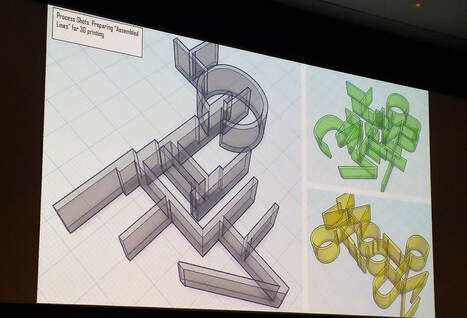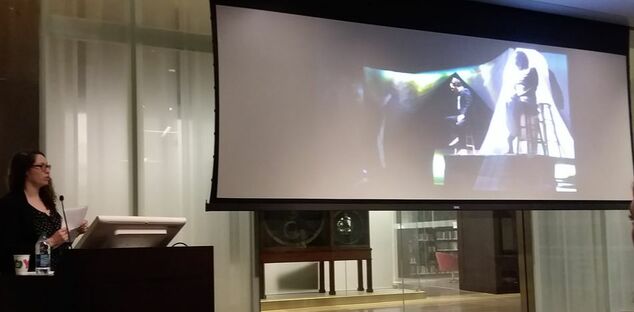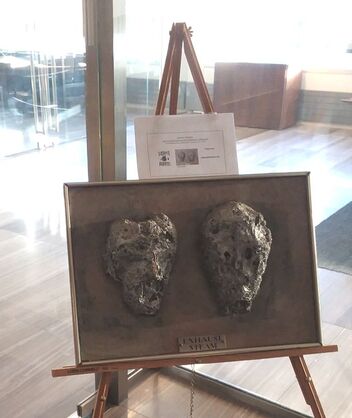PASC 2018 Symposium:
The 'Vivifying Current of Science':
Avant-Garde Arts in the Techno-Scientific Age
Friday, Dec. 7, 2018
The Philadelphia Avant-Garde Studies Consortium (PASC) presented its 2018 Symposium, an electrifying program of performances, academic papers, poetry, exhibitions and music, “The ‘Vivifying Current of Science’: Avant-Garde Arts in the Techno-Scientific Age,” on Friday, Dec. 7, 2018, from 1 to 6 pm, in the Class of 1978 Orrery Pavilion of the Kislak Center for Special Collections, Rare Books and Manuscripts, 6th floor, Van Pelt-Dietrich Library Center, University of Pennsylvania.
PASC symposiums are free, and all are welcome to attend.
PASC symposiums are free, and all are welcome to attend.
|
|
|
PASC warmly thanks the presenters and participants in our 4th annual symposium:
John Heon, PhD Craig Dworkin, PhD Cheryl Harper Emily Brewton Schilling Thomas Patteson Loraine Wible Chris Reeves, PhD candidate Eric Schmaltz, PhD Daniella Vinitski Mooney, PhD Katie Hubbell. Friday, December 7, 2018 1 to 6 pm |
Inspiration for 'the vivifying current
of science' symposium topic
In his “Futurist Painting: Technical Manifesto” of 1910, Umberto Boccioni proclaimed that “the vivifying current of science” would “soon deliver painting from academicism” and posited that science was the ideal model for the arts: “Victorious science has nowadays disowned its past in order the better to serve the material needs of our time; we would that art, disowning its past, were able to serve at last the intellectual needs which are within us.” In stark contrast, Hans Arp saw the techno-philia of Futurists and modern society in general as true madness: “The Renaissance taught men the haughty exaltation of their reason. Modern times, with their science and technology, dedicated them to megalomania. The confusion of our epoch is the result of this overestimation of reason.”
It is no accident that the emergence of many avant gardes coincided with the surge of techno-scientific advances from the late 19th century to the present. Science has often functioned as “the shock of the new” that sparked innovation in the arts. From quantum physics and Pavlovian psychology to LSD and nuclear weapons, from space travel and genetic engineering to global climate change and cyberwarfare, from frontal lobotomies and Prozac to gender reassignment surgery and artificial intelligence, science and technology have transformed and continue to transform the world, radically reshaping our external and internal lives and our concept of the human. Such profound, pervasive change has elicited powerful artistic responses.
Artists such as Alfred Jarry, Marcel Duchamp, Djuna Barnes, Thomas Pynchon, Stanley Kubrick, Laurie Anderson, Bruce Nauman and Zadie Smith (to name just a few), have been obsessed with the techno-scientific world while simultaneously mocking it, conveying the amazement inspired by scientific discoveries and technological developments yet also comically undermining unquestioned belief in “victorious science.” In a more political vein, Allen Ginsberg in “Plutonian Ode” and “Howl” and Norman Mailer in The Armies of the Night, sought to inspire revolt against the hegemony of techno-science, urging readers to see themselves as “crusaders” ready to “attack the hard core of technology land … some sexo-technological variety of neo-fascism” (Mailer). Today, artists such as Natelie Jeremenjenko, with her Bureau of Inverse Technology and artworks that entail the design and execution of scientific experiments; and Trevor Paglen, with his use of everything from Fukushima radioactive waste to satellite surveillance technologies, have attempted to open up the Latourian black box of techno-science, revealing the social, cultural, political, and economic forces inside.
It is no accident that the emergence of many avant gardes coincided with the surge of techno-scientific advances from the late 19th century to the present. Science has often functioned as “the shock of the new” that sparked innovation in the arts. From quantum physics and Pavlovian psychology to LSD and nuclear weapons, from space travel and genetic engineering to global climate change and cyberwarfare, from frontal lobotomies and Prozac to gender reassignment surgery and artificial intelligence, science and technology have transformed and continue to transform the world, radically reshaping our external and internal lives and our concept of the human. Such profound, pervasive change has elicited powerful artistic responses.
Artists such as Alfred Jarry, Marcel Duchamp, Djuna Barnes, Thomas Pynchon, Stanley Kubrick, Laurie Anderson, Bruce Nauman and Zadie Smith (to name just a few), have been obsessed with the techno-scientific world while simultaneously mocking it, conveying the amazement inspired by scientific discoveries and technological developments yet also comically undermining unquestioned belief in “victorious science.” In a more political vein, Allen Ginsberg in “Plutonian Ode” and “Howl” and Norman Mailer in The Armies of the Night, sought to inspire revolt against the hegemony of techno-science, urging readers to see themselves as “crusaders” ready to “attack the hard core of technology land … some sexo-technological variety of neo-fascism” (Mailer). Today, artists such as Natelie Jeremenjenko, with her Bureau of Inverse Technology and artworks that entail the design and execution of scientific experiments; and Trevor Paglen, with his use of everything from Fukushima radioactive waste to satellite surveillance technologies, have attempted to open up the Latourian black box of techno-science, revealing the social, cultural, political, and economic forces inside.

